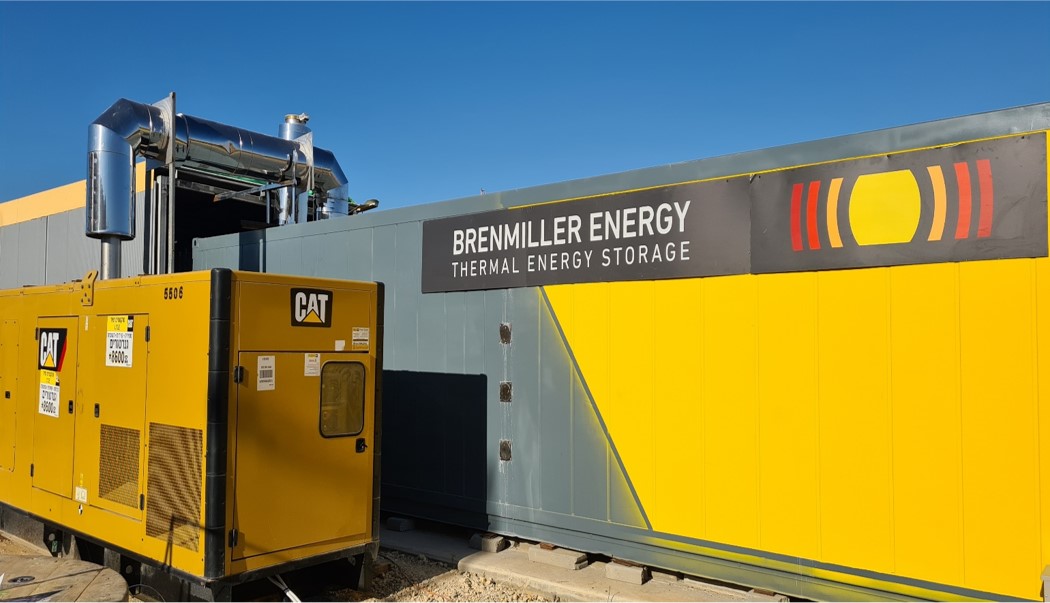Camber Energy, Inc. (NYSE-Amer: CEI) traded higher after earnings. That’s a welcomed difference from the past few months of publicly-traded results, with many reports sending company stocks lower as challenging market headwinds erode revenues, margins, and bottom-line growth. Not for Camber Energy. Since its 10K/2022 filing last week, CEI shares are higher by about 14% to $1.58. That level is also extending its recent bullish run that started in the middle of March. Since the 16th, CEI shares are higher by over 31% at current prices.
Earnings showed growth. Comparative revenues were higher, expenses were lower, and the company has only 20 million outstanding shares. Moreover, derivative liability was reduced by 92% to $7.59 million at year’s end, total liabilities shrunk by 56% to $51.82 million, a 56% reduction compared to 2021, and net loss decreased by 89%. Thus, while CEI has some work to do to get its bottom line to profitability, plenty of highlights support the continued bullish sentiment for its stock.
Of course, 2022 earnings become a historical measure, and investors are now focused on what CEI can get done in 2023. According to management, there’s plenty in the works.
Value Proposition Exposed In Analyst Report
An analyst report from Goldman Small Cap Research pointed out several vale drivers and his belief for how they can impact growth. Foremost is the value in play from the planned merger of Camber Energy and Viking Energy Group by the end of Q3 this year. It’s a deal delivering significant revenue-generating firepower that provides enough tangible evidence to support appreciably higher stock prices. Steps are being taken, and once they complete the closing, it will make Camber, already one of the most diverse equipment and services companies in the energy and industrial segments, stronger by diversifying its interests and adding new revenue streams from custom energy and power systems and services, clean energy technology, and oil and gas interests.
While it’s taken more time than expected to close the deal, steps taken in 2022-23 get the two closer to consummating the agreement. Once finalized, CEI will be ideally positioned to maximize revenues inherent to a fortified pipeline business and additional merger and acquisition. As it stands, closing the deal using today’s numbers, Goldman’s full-year proforma revenue forecasts for the combined company call for $31 million in 2023 and $42.4 million in 2024. Notably, these estimates do not include expected revenue contributions from any deal or acquisition prospect not yet in the pipeline.
Still, those estimates are enough to support modeling for a significantly higher share price. Goldmans’ 6-9-month price target for CEI stock is $2.75, generated by a finalized merger and 4X 2024 E revenue. That multiple is based upon a review of peers in ESG, energy, and specialty industrial equipment.
Making Viking Energy Wholly-Owned
The supporting evidence for the bullish thesis is in the public domain. Viking Energy (OTC: VKIN) is a fast-growing company providing custom energy & power solutions to commercial and industrial clients in North America. They are revenue-generating, hold significant IP, and continue to accrue interests likely to appreciate through active interests in United States oil and natural gas assets. Of course, with commodities lower across the board, pressure on the share prices of CEI and VKIN can be expected.
However, markets change quickly, with corrections to oil, natural gas, and other commodities sometimes happening several times a year. Thus, low prices today mean little to a market heading into the summer and winter months. Any disruption to the natural order can generate a price surge for each. It’s simple supply and demand calculations and an easy model to follow for justifying the longer-term value inherent value to CEI and VKIN. The near term could also see fortunes. Recent market turmoil related to the banking sector leads many analysts to believe that rate CUTS are in the cards. If so, that supports an argument that GDP will trend higher, and as it does, so would the demand for the raw materials needed for production.
Still, the US is one of several markets for CEI and its subsidiaries. Similar growth expectations extend across the border, where aggressive rate hikes may also end. Moreover, like in the US, regulators in those countries may also need to cut rates to keep their economies growing in a managed way. Those decisions could further benefit CEI through its majority-owned subsidiary reach.
Growth in that scenario could happen quickly through its stake in VKIN, which can accrue to Camber through that company holding an exclusive license in Canada to a patented carbon-capture system, interest inherent to intellectual property rights to a fully developed and patented Waste Treatment system using Ozone Technology. In addition to that, they can also accrue value through intellectual property rights to fully developed, patent-pending, ready-for-market proprietary Electric Transmission and Distribution Open Conductor Detection Systems. In other words, CEI assets are more than growing; they are accretive to near and long-term value.
Stable positive cash flows from conventional energy and resource opportunities and interests help that proposition by positioning CEI to maximize its financial interests and provide tangible support for higher valuations through a diverse and innovative clean energy technologies portfolio.
Tangible Assets And Planned Acquisition Support Higher Valuations
They are demonstrating that portfolio’s value now, with Viking sharing details regarding IP rights to fully developed, patent-pending, ready-for-market proprietary Electrical Transmission and Distribution Open Conductor Detection Systems, interests in conventional oil assets in the Mid-Continent Region (USA), and maximizing an Intellectual Property License Agreement with ESG Clean Energy, LLC. That deal values its patent rights and know-how related to stationary electric power generation. It includes methods to capture 100% of carbon dioxide and utilize heat to produce saleable commodities (e.g., distilled water, DEF, NH3, NH4).
Valuing the CEI asset portfolio isn’t difficult. They provide plenty of transparency, allowing investors to appraise appropriate share price levels. But until CEI hired an outside firm to expose potential illegal short selling in its stock, it’s been hard to maintain fair value. With that legacy issue likely resolved and factoring in the combined contributions from CEI’s interests, executing its diversified growth strategy could make the path of least resistance for CEI shares higher – and that’s only considering what CEI owns now.
A revenue-generating transformation is in play that could forever change the trajectory of CEI. During Q4/22, Camber Energy announced entering into an agreement to acquire certain privately-owned companies generating $55 million in annual gross revenues. The recent commentary indicates steps are being taken to close that deal, including initiatives taken to protect shareholder value. Once that deal closes, it gives CEI working interests in 169 proved producing oil wells (producing 2000 barrels of oil per day), 174 proved non-producing wells, and 12 proved underdeveloped well locations. Of course, these interests are oil-price dependent, which in recessionary times can be weak. Still, despite current oil and natural gas market conditions, the agreement can be a significant growth catalyst as markets recover, whether later this year or in 2024. In either case, CEI can be in a good place, knowing that proving assets under the ground can still be enormous contributors to the balance sheet. There’s more to appreciate.
Drawing On Diesel To Power Growth
In Q1, CEI announced entering a Membership Interest Purchase Agreement to acquire a 100% interest in companies bringing a processing plant designed to produce renewable diesel into commercial operations. Once operational, the plant’s estimated production capacity is roughly 43,000,000 gallons annually. It’s a timely deal. Renewable diesel fuel, sometimes called green diesel, is a biofuel chemically the same as petroleum diesel fuel and is produced through various thermochemical processes such as hydrotreating, gasification, and pyrolysis. Renewable diesel is made from renewable feedstocks instead of crude oil and is approximately 50%-55% less carbon-intensive than traditional petroleum diesel.
Here’s more to appreciate about that interest. Global renewable energy consumption is increasing annually, a trend likely to continue as government mandates and voluntary shifts to less carbon-intensive energy sources by businesses and individuals accelerate that initiative. Keep in mind that the deal is still in the works. Camber’s obligation to complete the transaction is conditional on several items in the Membership Interest Purchase Agreement, and there is no guarantee that the conditions will be satisfied. With that said, meeting those conditions and closing the deal could add to what’s already expected to be a transformative growth period for CEI this year.
A Company On The Verge Of Transformation
Thus, share price strength in March shouldn’t be surprising. Those paying attention know that Camber Energy has completed the necessary groundwork enabling them to transform itself into a significantly larger energy company. The expected closing of the Viking Energy deal and planned acquisitions provide a pathway toward profitability that should keep investors excited about the direction of CEI.
The intrinsic, inherent value, tangible assets, and a proven track record of delivering value also play a role in the bullish thesis. Moreover, they expose CEI as a near and long-term value investment proposition that could be a single headline away from a new leg higher. And with milestones reached that can become catalysts, that move higher could come sooner than many expect.
Disclaimers: Trendingsmallcaps.com (TSM) is responsible for the production and distribution of this content. TSM is not operated by a licensed broker, a dealer, or a registered investment adviser. It should be expressly understood that under no circumstances does any information published herein represent a recommendation to buy or sell a security. Our reports/releases are a commercial advertisement and are for general information purposes ONLY. We are engaged in the business of marketing and advertising companies for monetary compensation. Never invest in any stock featured on our site or emails unless you can afford to lose your entire investment. The information made available by TSM is not intended to be, nor does it constitute, investment advice or recommendations. The contributors may buy and sell securities before and after any particular article, report and publication. In no event shall TSM be liable to any member, guest or third party for any damages of any kind arising out of the use of any content or other material published or made available by TSM, including, without limitation, any investment losses, lost profits, lost opportunity, special, incidental, indirect, consequential or punitive damages. Past performance is a poor indicator of future performance. The information in this video, article, and in its related newsletters, is not intended to be, nor does it constitute, investment advice or recommendations. TSM strongly urges you conduct a complete and independent investigation of the respective companies and consideration of all pertinent risks. Readers are advised to review SEC periodic reports: Forms 10-Q, 10K, Form 8-K, insider reports, Forms 3, 4, 5 Schedule 13D. For some content, TSM, its authors, contributors, or its agents, may be compensated for preparing research, video graphics, and editorial content. Trendingsmallcaps.com has been compensated up to ten-thousand-dollars cash via wire transfer by a third party to produce and syndicate content for Camber Energy Group, Inc. for a period of one month. As part of that content, readers, subscribers, and website viewers, are expected to read the full disclaimers and financial disclosures statement that can be found on our website. The Private Securities Litigation Reform Act of 1995 provides investors a safe harbor in regard to forward-looking statements. Any statements that express or involve discussions with respect to predictions, expectations, beliefs, plans, projections, objectives, goals, assumptions or future events or performance are not statements of historical fact may be forward looking statements. Forward looking statements are based on expectations, estimates, and projections at the time the statements are made that involve a number of risks and uncertainties which could cause actual results or events to differ materially from those presently anticipated. Forward looking statements in this action may be identified through use of words such as projects, foresee, expects, will, anticipates, estimates, believes, understands, or that by statements indicating certain actions & quote; may, could, or might occur. Understand there is no guarantee past performance will be indicative of future results. Investing in micro-cap and growth securities is highly speculative and carries an extremely high degree of risk. It is possible that an investors investment may be lost or impaired due to the speculative nature of the companies profiled.





 Trendingsmallcaps.com, a leading financial news informational web portal designed to provide the latest trends in Market News, Investing News, in-depth broadcasts on Stock News, Market Analysis and Company Interviews.
Trendingsmallcaps.com, a leading financial news informational web portal designed to provide the latest trends in Market News, Investing News, in-depth broadcasts on Stock News, Market Analysis and Company Interviews.